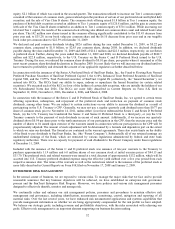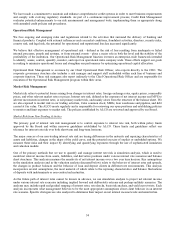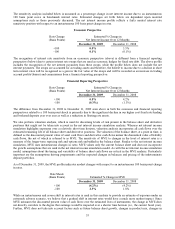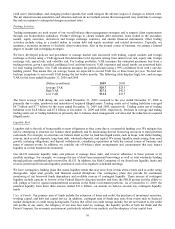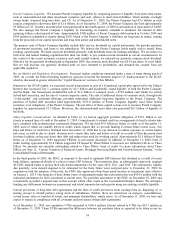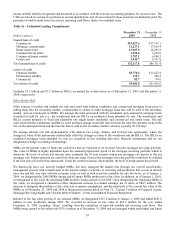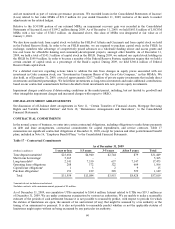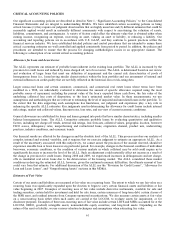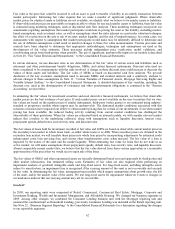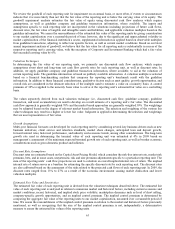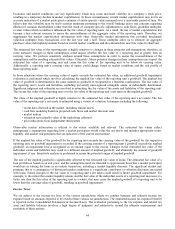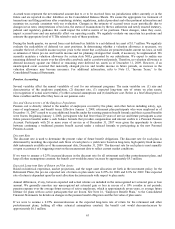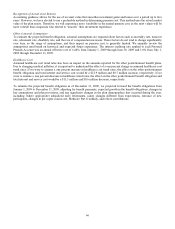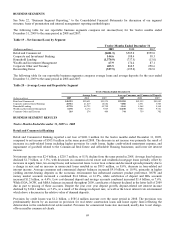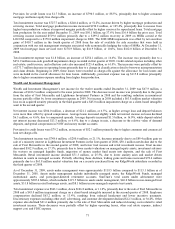SunTrust 2009 Annual Report Download - page 77
Download and view the complete annual report
Please find page 77 of the 2009 SunTrust annual report below. You can navigate through the pages in the report by either clicking on the pages listed below, or by using the keyword search tool below to find specific information within the annual report.CRITICAL ACCOUNTING POLICIES
Our significant accounting policies are described in detail in Note 1, “Significant Accounting Policies,” to the Consolidated
Financial Statements and are integral to understanding MD&A. We have identified certain accounting policies as being
critical because (1) they require our judgment about matters that are highly uncertain and (2) different estimates that could be
reasonably applied would result in materially different assessments with respect to ascertaining the valuation of assets,
liabilities, commitments, and contingencies. A variety of factors could affect the ultimate value that is obtained either when
earning income, recognizing an expense, recovering an asset, valuing an asset or liability, or reducing a liability. Our
accounting and reporting policies are in accordance with U.S. GAAP, and they conform to general practices within the
financial services industry. We have established detailed policies and control procedures that are intended to ensure these
critical accounting estimates are well controlled and applied consistently from period to period. In addition, the policies and
procedures are intended to ensure that the process for changing methodologies occurs in an appropriate manner. The
following is a description of our current critical accounting policies.
Allowance for Loan and Lease Losses
The ALLL represents our estimate of probable losses inherent in the existing loan portfolio. The ALLL is increased by the
provision for credit losses and reduced by loans charged off, net of recoveries. The ALLL is determined based on our review
and evaluation of larger loans that meet our definition of impairment and the current risk characteristics of pools of
homogeneous loans (i.e., loans having similar characteristics) within the loan portfolio and our assessment of internal and
external influences on credit quality that are not fully reflected in the historical loss or risk-rating data.
Larger nonaccrual loans and certain consumer, commercial, and commercial real estate loans whose terms have been
modified in a TDR, are individually evaluated to determine the amount of specific allowance required using the most
probable source of repayment, including the present value of the loan’s expected future cash flows, the fair value of the
underlying collateral less costs of disposition, or the loan’s estimated market value. In these measurements, we use
assumptions and methodologies that are relevant to estimating the level of impaired and unrealized losses in the portfolio. To
the extent that the data supporting such assumptions has limitations, our judgment and experience play a key role in
enhancing the specific ALLL estimates. Key judgments used in determining the allowance for credit losses include internal
risk ratings, market and collateral values, discount rates, loss rates, and our view of current economic conditions.
General allowances are established for loans and leases grouped into pools that have similar characteristics, including smaller
balance homogeneous loans. The ALLL Committee estimates probable losses by evaluating quantitative and qualitative
factors, including net charge-off trends, internal risk ratings, loss forecasts, collateral values, geographic location, borrower
FICO scores, delinquency rates, nonperforming and restructured loans, origination channel, product mix, underwriting
practices, industry conditions, and economic trends.
Our financial results are affected by the changes in and the absolute level of the ALLL. This process involves our analysis of
complex internal and external variables, and it requires that we exercise judgment to estimate an appropriate ALLL. As a
result of the uncertainty associated with this subjectivity, we cannot assure the precision of the amount reserved, should we
experience sizeable loan or lease losses in any particular period. For example, changes in the financial condition of individual
borrowers, economic conditions, or the condition of various markets in which collateral may be sold could require us to
significantly decrease or increase the level of the ALLL. Such an adjustment could materially affect net income as a result of
the change in provision for credit losses. During 2008 and 2009, we experienced increases in delinquencies and net charge-
offs in residential real estate loans due to the deterioration of the housing market. The ALLL considered these market
conditions in deriving the estimated ALLL; however, given the continued economic difficulties, the ultimate amount of loss
could vary from that estimate. For additional discussion of the ALLL see the “Provision for Credit Losses”, “Allowance for
Loan and Lease Losses”, and “Nonperforming Assets” sections in this MD&A.
Estimates of Fair Value
Certain of our assets and liabilities are measured at fair value on a recurring basis. The extent to which we use fair value on a
recurring basis was significantly expanded upon the election to begin to carry certain financial assets and liabilities at fair
value beginning in 2007. Examples of recurring uses of fair value include derivative instruments, available for sale and
trading securities, certain held for investment and held for sale loans, certain issuances of long-term debt, certain classes of
the MSR asset, and residual interests from Company-sponsored securitizations. We also measure certain assets at fair value
on a non-recurring basis either when such assets are carried at the LOCOM, to evaluate assets for impairment, or for
disclosure purposes. Examples of these non-recurring uses of fair value include certain LHFS and MSRs accounted for at the
LOCOM, OREO, goodwill, intangible assets, nonmarketable equity securities, and long-lived assets. Depending on the
nature of the asset or liability, we use various valuation techniques and assumptions when estimating fair value.
61



